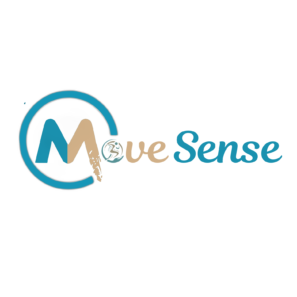Cervicogenic Headache
Cervicogenic Headache
Cervicogenic headache is a type of secondary headache, meaning it is caused by another condition, specifically arising from issues in the cervical spine (neck). The pain originates in the neck and radiates to the head. Key characteristics of cervicogenic headache include:
Pain Location: Typically, the pain is felt on one side of the head but can sometimes be bilateral. It often starts at the back of the head and can spread to the front and around the eyes.
Neck Involvement: The headache is usually accompanied by neck pain, stiffness, or discomfort. Movements of the neck can often trigger or worsen the headache.
Pain Characteristics: The pain can be dull, aching, or throbbing, and is often continuous or recurrent.
Triggers: Neck movement, sustained awkward head positions, or pressure on the neck can provoke the headache.
Associated Symptoms: Some people may experience symptoms similar to migraines, such as nausea, sensitivity to light and sound, but these are less common in cervicogenic headaches.
The exact causes of cervicogenic headaches can vary and may include:
- Cervical Spine Disorders: Conditions like herniated discs, osteoarthritis, or cervical spondylosis.
- Muscle Strain: Strain or injury to the neck muscles and soft tissues.
- Nerve Compression: Pinched nerves in the neck.
- Trauma: Whiplash injuries or other neck traumas.
Diagnosis typically involves a physical examination, review of medical history, and imaging studies like X-rays, MRI, or CT scans to identify underlying cervical spine issues.

What are the signs and symptoms of Cervicogenic Headache?
Cervicogenic headaches are caused by another condition that stimulates the pain-sensitive nerves in the head, often due to dysfunction in the cervical joints of the neck.
Individuals with cervicogenic headaches typically experience mild to moderate pain, usually on one side of the head (unilateral pain). The headache often starts in the neck and radiates up to the head and face.
Individuals with cervicogenic headaches may also experience:
- Pulsating or sharp pain around the eye, forehead, side, or back of the head
- Severe pain or discomfort in the neck
- Reduced range of motion in the neck
- Dizziness
- Tinnitus
- Nausea
- Vomiting
- Difficulty concentrating
- Impaired ability to function normally
- Depression
- Need Assistance?
(07) 5619-5588
Additional information about Cervicogenic Headache:
Neck Injury and Dysfunction
Cervicogenic headaches, often mistaken for tension headaches or migraines, result from injury or dysfunction in the neck. This condition stimulates the afferent nerve fibers (cervical spinal nerves), sending pain signals to the head, which are perceived as a cervicogenic headache. Individuals with cervicogenic headaches typically exhibit dysfunction in the upper three cervical spine regions:
- Atlanto-Occipital joint (O-C1)
- Atlanto-Axial joint (C1-2)
- Second and third cervical spine (C2-3)
Sensitized Brainstem
Clinical trials indicate that issues in the upper cervical spine can lead to a sensitized brainstem. Individuals with cervicogenic headaches often have dysfunction in the O-C1, C1-2, and C2-3 segments, or a combination of these areas. The brainstem, particularly the Trigemino-Cervical Nucleus (TCN), is located in the upper three cervical spine segments.
Dysfunction in these joints sensitizes the brainstem, causing pain to radiate into the head. This can result in chronic headaches and potentially migraine-like pain.
How MoveSense will help you treat the Cervicogenic Headache?
Many practitioners still use outdated medical models to treat cervicogenic headaches. At MoveSense, Varun Gautam(Head Physiotherapist) specialize in treating headaches and migraines, staying current with the latest literature and applying the most effective treatments. We have successfully treated countless patients with cervicogenic headaches, achieving significant results.
We begin with a thorough examination of the upper cervical spine to assess the severity of your sensitized brainstem. If your brainstem is hypersensitive and causing your cervicogenic headaches, we implement treatment to desensitize it effectively and safely.
We expect significant improvement in 90% of our patients with cervicogenic headaches within the first five treatment sessions. We provide honest assessments; if we don’t believe our treatment can help you, we’ll let you know after the initial consultation. Our treatment effectively alleviates or significantly reduces cervicogenic headaches in 85-90% of sufferers.
The best part is that our manual/physical therapy treatment is drug-free, surgery-free, and non-invasive.

Varun Gautam
Headache and migraine specialist Physiotherapist
